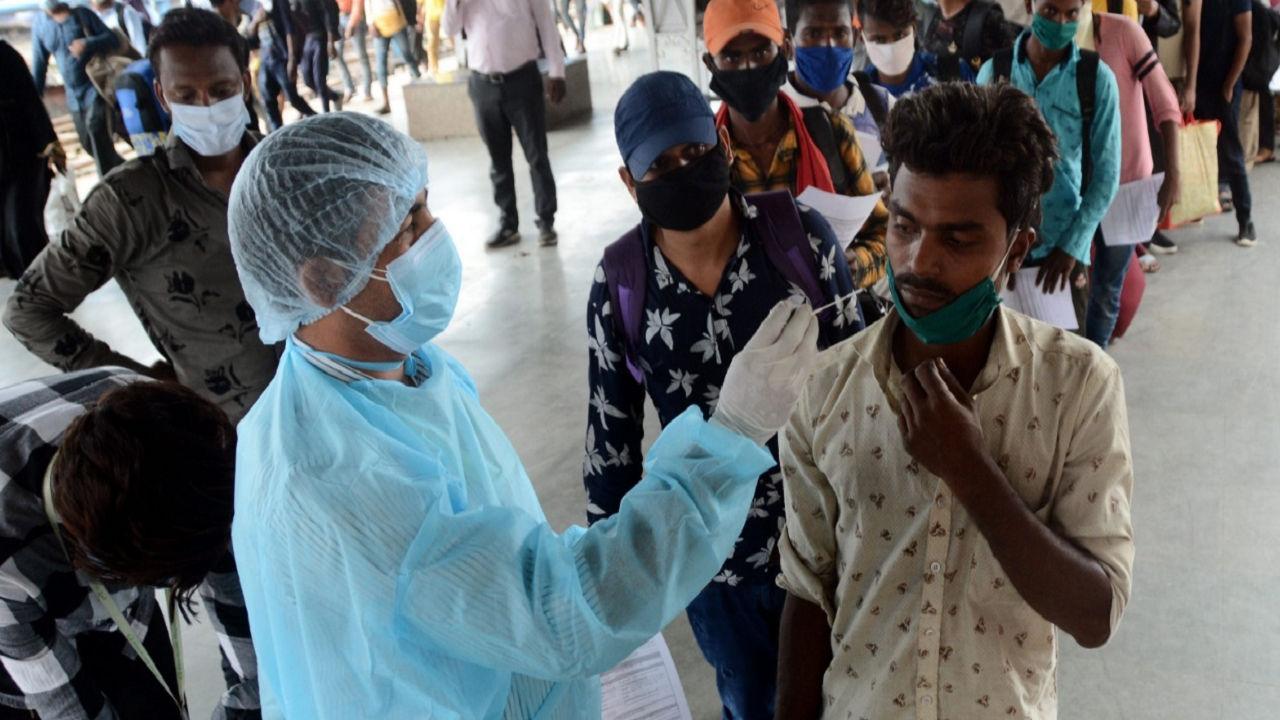The Covid-19 Weekly Epidemiological Update, released by the World Health Organization on August 10, said that the South-East Asia Region reported over 799,000 new cases, a five per cent decrease as compared to the previous week

Photo for representational purpose
The Covid-19 numbers in the South-East Asia region peaked in early May and has since largely plateaued over the past month mainly due to cases in India remaining stable and consistent decreases in Indonesia and Myanmar over the past month, the WHO has said.
ADVERTISEMENT
The Covid-19 Weekly Epidemiological Update, released by the World Health Organization on August 10, said that the South-East Asia Region reported over 799,000 new cases, a five per cent decrease as compared to the previous week, however, several countries in the Region continue to report increasing trends, including Sri Lanka and Thailand (26 per cent and 20 per cent increases, respectively).
"Case incidences in the region peaked in early May and have since largely plateaued over the past month. This is largely due to cases in India remaining stable, and consistent decreases in Indonesia and Myanmar over the past month," the update said.
It added that following a steep increase in the mortality rate in the region, this is the first time in seven weeks that a decline in the number of new weekly deaths has been reported; a trend largely driven by declines in the Maldives and Myanmar this week.
Large increases in weekly deaths were reported in several countries including Sri Lanka (47 per cent increase), Nepal (35 per cent) and Thailand (30 per cent).
The highest number of new cases were reported from India (278,631 new cases; 20.2 new cases per 100,000; 2 per cent decrease), Indonesia (225,635 new cases; 82.5 new cases per 100,000; 18 per cent decrease), and Thailand (141,191 new cases; 202.3 new cases per 100 000; 20 per cent increase).
In the region, the highest numbers of new deaths were reported from Indonesia (11,373 new deaths; 4.2 new deaths per 100,000; 9 per cent decrease), India (3511 new deaths; 0.3 new deaths per 100,000; 8 per cent decrease), and Myanmar (2045 new deaths; 3.8 new deaths per 100,000; 22 per cent decrease).
Globally, cases of the Alpha variant have been reported in 185 countries, territories or areas, while 142 countries reported cases of the Delta variant, 136 countries reported cases of the Beta variant and 81 countries reported cases of the Gamma variant.
The update said that on August 5, the cumulative number of Covid-19 cases globally surpassed 200 million, just six months after reaching 100 million cases.
This week alone, over 4.2 million new cases and over 65,000 new deaths were reported, a slight increase as compared to the previous week.
The largest proportionate increases in new cases were reported by the Region of the Americas (14 per cent) and Western Pacific Region (19 per cent), with 1.3 million and over 375 000 new cases reported, respectively.
Of the 228 member states and territories, 38 (17 per cent) reported more than a 50 per cent increase in new cases as compared to the previous week and 34 (15 per cent) reported a more than a 50 per cent increase in new deaths.
At the country level, the highest numbers of new cases were reported from the United States at 734,354 new cases, a 35 per cent increase, India with 278,631 new cases; a two per cent decrease), Iran (248,102 new cases; 20 per cent increase), Brazil (228,473 new cases; 8 per cent decrease), and Indonesia (225,635 new cases; 18 per cent decrease).
The update said that eight recent studies have assessed the impact of the Delta variant on Covid-19 vaccine performance.
It cited a study from India that has not yet been peer-reviewed and which assessed the effectiveness of the AstraZeneca-Vaxzevria vaccine at preventing SARS-CoV-2 infection and severe Covid-19 disease in a setting with a high prevalence of the Delta variant.
The study from India found that two doses of the AstraZeneca-Vaxzevria vaccine were 63.1 per cent and 81.5 per cent effective at preventing infection and moderate-severe disease, respectively.
Single-dose VE against infection (46.2 per cent) was lower than two doses VE, while single-dose VE against moderate-severe disease (79.2 per cent) was similar to that of 2 doses.
Also read: US schools reopen but Covid-19 continues to rise in children
It said while this study was conducted during a time of high transmission of the Delta variant, it is noteworthy that viral sequencing and lineage determination were available from only a small subset of positive cases (4.4%); of these samples 90% were the Delta variant.
A report on the first local transmission of the Delta SARS-CoV-2 variant in China described viral infection and transmission dynamics of 167 cases that were traced back to the index case.
Daily sequential PCR testing of the quarantined subjects indicated that among those who became infected, the viral load of the first positive test of Delta infections was approximately 1000 times higher than that of the original non-Variant Of Concern strain, suggesting the potential for faster viral replication and increased infectiousness of the Delta variant during early stages of infection.
This story has been sourced from a third party syndicated feed, agencies. Mid-day accepts no responsibility or liability for its dependability, trustworthiness, reliability and data of the text. Mid-day management/mid-day.com reserves the sole right to alter, delete or remove (without notice) the content in its absolute discretion for any reason whatsoever.
 Subscribe today by clicking the link and stay updated with the latest news!" Click here!
Subscribe today by clicking the link and stay updated with the latest news!" Click here!






